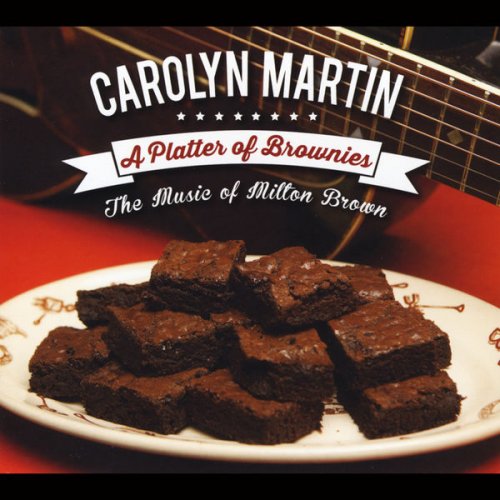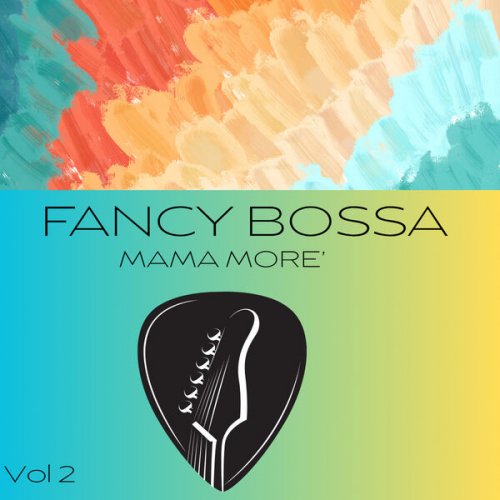Buselli-Wallarab Jazz Orchestra - The Gennett Suite (2023) Hi-Res
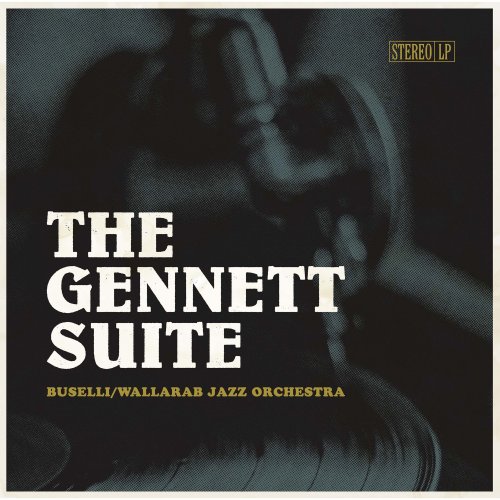
Artist: Buselli-Wallarab Jazz Orchestra
Title: The Gennett Suite
Year Of Release: 2023
Label: Patois Records
Genre: Jazz
Quality: FLAC (tracks) / FLAC 24 Bit (44,1 KHz / tracks)
Total Time: 79:20 min
Total Size: 528 / 927 MB
WebSite: Album Preview
Tracklist: Title: The Gennett Suite
Year Of Release: 2023
Label: Patois Records
Genre: Jazz
Quality: FLAC (tracks) / FLAC 24 Bit (44,1 KHz / tracks)
Total Time: 79:20 min
Total Size: 528 / 927 MB
WebSite: Album Preview
01. The Gennett Suite: Royal Blue: No.1, Tin Roof Blues Pt. 1. Tin Roof Blues Pt. 2. Chimes Blues
02. The Gennett Suite: I. Royal Blue: No. 2, Dippermouth Blues
03. The Gennett Suite: II. Blues Faux Bix: No. 1, Davenport Blues
04. The Gennett Suite: II. Blues Faux Bix: No. 2, The Jazz Me Blues
05. The Gennett Suite: II. Blues Faux Bix: No. 3, Interlude
06. The Gennett Suite: II. Blues Faux Bix: No. 4, Wolverine Blues
07. The Gennett Suite: III. Hoagland: No. 1, Stardust
08. The Gennett Suite: III. Hoagland: No. 2, Riverboat Shuffle Pt. 1
09. The Gennett Suite: III. Hoagland: No. 3, Riverboat Shuffle, Pt. 2
10. The Gennett Suite: IV. Mr. Jelly Lord No. 1, King Porter Stomp
11. Gennett Suite: IV. Mr. Jelly Lord: No. 2, Grandpa's Spells
To most people, the small town of Richmond, Indiana won’t ring a bell. But those attuned to the seismic events that occurred there a century ago will instantly conjure up such early jazz icons as Louis Armstrong, Bix Beiderbecke, and Jelly Roll Morton, surrounded by primitive recording technology in a converted piano factory – the setting for some of the most famous, pioneering jazz records made at the Gennett Studios, for one of the earliest successful record labels.
The brilliant composer and Indiana University professor Brent Wallarab has long admired that music, and the story of how culture, politics, capitalism, and the 1920s thirst for freedom combined to place Gennett at an epicenter of 20th-century music. With The Gennett Suite, he captures that history in a monumental piece, for the Buselli-Wallarab Jazz Orchestra, that repurposes music from the Gennett label’s influential early records. The album will be released on June 9, 2023 on Patois Records, a scrappy little label of our own time, owned by veteran trombonist and educator Wayne Wallace.
Using such classic compositions as “Dippermouth Blues,” “Wolverine Blues,” and “Star Dust” – the first recording of which took place in Richmond – Wallarab reimagines these legendary themes and personages for a new century. To do so, he has emptied his considerable toolbox of musical wizardry. He has extended themes, elasticized the time, turned ensembles into prisms, and applied a host of anachronic techniques – funkified bass lines, advanced harmonies, brilliant sonances, and plush ensemble textures barely imagined 100 years ago – to boldly bring these ancient compositions into the 21st century.
But not at the expense of the original material; at their most modern, Wallarab’s reinterpretations lose neither sight nor sound of the source. “These are more than just ‘arrangements’ of the tunes,” he points out. “I tried to give each one its own character. . . . [Each] is a unique part of the overall narrative I want to tell.”
Wallarab designed The Gennett Suite in four movements, each of which elevates one of the major jazz tributaries flowing into the Gennett studios in the early 1920s. The first movement, Royal Blue, celebrates some of the label’s earliest stars, tracing the evolution of jazz from an idiom of collective improvisation – represented by “Tin Roof Blues,” recorded in 1923 by the New Orleans Rhythm Kings – to a soloist’s art in the hands of Louis Armstrong. Wallarab illustrates this transition with an interlude that leads from “Tin Roof Blues” to the contemporaneous classics “Chimes Blues” and “Dippermouth Blues,” Gennett recordings made by King Oliver’s Creole Jazz Band starring Armstrong, who had arrived in Chicago in 1922.
The second movement, Blues Faux Bix, focuses on Armstrong’s white counterpart, cornetist Bix Beiderbecke, whose cooler sound and more measured approach provided a Midwest alternative to the sounds from New Orleans. (Beiderbecke was born and raised in Davenport, Iowa.) This movement combines several songs Beiderbecke recorded for Gennett with his band The Wolverines – the early classics “Wolverine Blues” and “The Jazz Me Blues” – and Beiderbecke’s eidetic “Davenport Blues,” recorded under his own name and here starring Wallarab’s longtime band-leading partner, trumpet ace Mark Buselli.
Movement 3, Hoagland, reminds us that one of the earliest architects of the Great American Songbook – Hoagland Howard (“Hoagy”) Carmichael – played his own role in the Gennett story, as a fledgling songwriter and confidant of other musicians on the scene. On Carmichael’s classic “Riverboat Shuffle,” Wallarab recombines sections of the melody to build suspense and create an irresistible propulsion. But the real highlight is Wallarab’s extraordinary recomposition – and saxophonist Greg Ward’s emotionally transcendent interpretation – of “Star Dust,” which many consider to be the greatest single American popular song.
Carmichael first recorded “Star Dust” at Gennett in 1927. It grew out of his friendship with and admiration for Beiderbecke: Carmichael sought to capture the dreamy quality of the cornetist’s improvisations in this indelible through-composed melody. Given its pride among place in popular music, its inclusion would seem like a foregone conclusion, but Wallarab felt that wasn’t justification enough. “I went round and round on this,” he admits. “I mean, does the world really need another arrangement of ‘Star Dust?’ But I knew that if we were going to deal with Hoagy, it had to be reckoned with. So I decided that I would only submit a new arrangement if I could come up with a different approach.”
He ended up with a fantasia based on the original theme, incorporating elements from European classical composers in subtle ways; once he’d decided on the treatment, Wallarab knew that it should be a vehicle for Ward, the Chicago jazz veteran who joined the Indiana University faculty in 2019. Ward is well known in new jazz circles for exploratory bands like his Rogue Parade, and for collaborations with “Beat Scientist” Makaya McCraven. As Wallarab points out, “We all know what an amazingly creative small-group improviser he is. But a lead saxophone player in a big band? It’s just among the best I’ve ever heard from anyone. His playing on ‘Star Dust’ is just breathtaking.”
The final movement, Mr. Jelly Lord, honors Jelly Roll Morton, the first notable jazz composer, whose 1923 Gennett collaboration with the New Orleans Rhythm Kings helped put the new studio and its fledgling label on the map of American recording. Morton’s early arrangements had a seminal impact on his peers and imitators; and in “King Porter Stomp,” he gifted the world with a classic composition that has inspired new treatments by artists from Fletcher Henderson to Gil Evans to avant-jazz guitarist Noël Akchoté.
Although not a native Hoosier, Wallarab has spent the majority of his adult life in Indiana, and he has taken a keen interest in the state’s pivotal role during the early days of the recording industry. “Gennett’s importance in spreading jazz throughout the country has always been so inspiring to me,” he explains. His first attempt to commemorate that history in the form of a major composition came in 2003; but even after the piece was performed, “I knew that it wasn’t done yet,” he says. “It was OK, but it became the model for the current Gennett Suite.” He began to rewrite the project in 2017 and then, in early 2022, he committed to finishing the monumental piece before the end of the year.
“As far as I’m concerned, my job was to create this musical narrative of Gennett,” Wallarab continues. To help tell that story beyond the music itself, he enlisted acclaimed jazz historian John Hasse, Curator Emeritus at the Smithsonian Institution, whose astute historical essay contextualizes the milieu in which jazz and Gennett both took root; and also David Brent Johnson, author and nationally syndicated radio host at Bloomington’s WFIU-FM, to analyze Wallarab’s use of the source material for the work. The essays highlight the 60-plus-page booklet that accompanies the splendidly packaged double-CD.
In bringing the music of 100 years ago forward, Wallarab has fulfilled his long-held goal to commemorate Gennett and, more broadly, the state of Indiana’s vital and often forgotten role in the record business. A passionate educator, he has also made this a teachable moment, using the work to dust off and re-examine music that remains vital yet malleable to changing tastes.
In 2023, “Gennett is not exactly an unknown,” Wallarab says, but neither is it high in the consciousness of modern listeners. In fact, “A lot of the musicians who played on the session had no idea about the label and his history.” But they surely do now.
The brilliant composer and Indiana University professor Brent Wallarab has long admired that music, and the story of how culture, politics, capitalism, and the 1920s thirst for freedom combined to place Gennett at an epicenter of 20th-century music. With The Gennett Suite, he captures that history in a monumental piece, for the Buselli-Wallarab Jazz Orchestra, that repurposes music from the Gennett label’s influential early records. The album will be released on June 9, 2023 on Patois Records, a scrappy little label of our own time, owned by veteran trombonist and educator Wayne Wallace.
Using such classic compositions as “Dippermouth Blues,” “Wolverine Blues,” and “Star Dust” – the first recording of which took place in Richmond – Wallarab reimagines these legendary themes and personages for a new century. To do so, he has emptied his considerable toolbox of musical wizardry. He has extended themes, elasticized the time, turned ensembles into prisms, and applied a host of anachronic techniques – funkified bass lines, advanced harmonies, brilliant sonances, and plush ensemble textures barely imagined 100 years ago – to boldly bring these ancient compositions into the 21st century.
But not at the expense of the original material; at their most modern, Wallarab’s reinterpretations lose neither sight nor sound of the source. “These are more than just ‘arrangements’ of the tunes,” he points out. “I tried to give each one its own character. . . . [Each] is a unique part of the overall narrative I want to tell.”
Wallarab designed The Gennett Suite in four movements, each of which elevates one of the major jazz tributaries flowing into the Gennett studios in the early 1920s. The first movement, Royal Blue, celebrates some of the label’s earliest stars, tracing the evolution of jazz from an idiom of collective improvisation – represented by “Tin Roof Blues,” recorded in 1923 by the New Orleans Rhythm Kings – to a soloist’s art in the hands of Louis Armstrong. Wallarab illustrates this transition with an interlude that leads from “Tin Roof Blues” to the contemporaneous classics “Chimes Blues” and “Dippermouth Blues,” Gennett recordings made by King Oliver’s Creole Jazz Band starring Armstrong, who had arrived in Chicago in 1922.
The second movement, Blues Faux Bix, focuses on Armstrong’s white counterpart, cornetist Bix Beiderbecke, whose cooler sound and more measured approach provided a Midwest alternative to the sounds from New Orleans. (Beiderbecke was born and raised in Davenport, Iowa.) This movement combines several songs Beiderbecke recorded for Gennett with his band The Wolverines – the early classics “Wolverine Blues” and “The Jazz Me Blues” – and Beiderbecke’s eidetic “Davenport Blues,” recorded under his own name and here starring Wallarab’s longtime band-leading partner, trumpet ace Mark Buselli.
Movement 3, Hoagland, reminds us that one of the earliest architects of the Great American Songbook – Hoagland Howard (“Hoagy”) Carmichael – played his own role in the Gennett story, as a fledgling songwriter and confidant of other musicians on the scene. On Carmichael’s classic “Riverboat Shuffle,” Wallarab recombines sections of the melody to build suspense and create an irresistible propulsion. But the real highlight is Wallarab’s extraordinary recomposition – and saxophonist Greg Ward’s emotionally transcendent interpretation – of “Star Dust,” which many consider to be the greatest single American popular song.
Carmichael first recorded “Star Dust” at Gennett in 1927. It grew out of his friendship with and admiration for Beiderbecke: Carmichael sought to capture the dreamy quality of the cornetist’s improvisations in this indelible through-composed melody. Given its pride among place in popular music, its inclusion would seem like a foregone conclusion, but Wallarab felt that wasn’t justification enough. “I went round and round on this,” he admits. “I mean, does the world really need another arrangement of ‘Star Dust?’ But I knew that if we were going to deal with Hoagy, it had to be reckoned with. So I decided that I would only submit a new arrangement if I could come up with a different approach.”
He ended up with a fantasia based on the original theme, incorporating elements from European classical composers in subtle ways; once he’d decided on the treatment, Wallarab knew that it should be a vehicle for Ward, the Chicago jazz veteran who joined the Indiana University faculty in 2019. Ward is well known in new jazz circles for exploratory bands like his Rogue Parade, and for collaborations with “Beat Scientist” Makaya McCraven. As Wallarab points out, “We all know what an amazingly creative small-group improviser he is. But a lead saxophone player in a big band? It’s just among the best I’ve ever heard from anyone. His playing on ‘Star Dust’ is just breathtaking.”
The final movement, Mr. Jelly Lord, honors Jelly Roll Morton, the first notable jazz composer, whose 1923 Gennett collaboration with the New Orleans Rhythm Kings helped put the new studio and its fledgling label on the map of American recording. Morton’s early arrangements had a seminal impact on his peers and imitators; and in “King Porter Stomp,” he gifted the world with a classic composition that has inspired new treatments by artists from Fletcher Henderson to Gil Evans to avant-jazz guitarist Noël Akchoté.
Although not a native Hoosier, Wallarab has spent the majority of his adult life in Indiana, and he has taken a keen interest in the state’s pivotal role during the early days of the recording industry. “Gennett’s importance in spreading jazz throughout the country has always been so inspiring to me,” he explains. His first attempt to commemorate that history in the form of a major composition came in 2003; but even after the piece was performed, “I knew that it wasn’t done yet,” he says. “It was OK, but it became the model for the current Gennett Suite.” He began to rewrite the project in 2017 and then, in early 2022, he committed to finishing the monumental piece before the end of the year.
“As far as I’m concerned, my job was to create this musical narrative of Gennett,” Wallarab continues. To help tell that story beyond the music itself, he enlisted acclaimed jazz historian John Hasse, Curator Emeritus at the Smithsonian Institution, whose astute historical essay contextualizes the milieu in which jazz and Gennett both took root; and also David Brent Johnson, author and nationally syndicated radio host at Bloomington’s WFIU-FM, to analyze Wallarab’s use of the source material for the work. The essays highlight the 60-plus-page booklet that accompanies the splendidly packaged double-CD.
In bringing the music of 100 years ago forward, Wallarab has fulfilled his long-held goal to commemorate Gennett and, more broadly, the state of Indiana’s vital and often forgotten role in the record business. A passionate educator, he has also made this a teachable moment, using the work to dust off and re-examine music that remains vital yet malleable to changing tastes.
In 2023, “Gennett is not exactly an unknown,” Wallarab says, but neither is it high in the consciousness of modern listeners. In fact, “A lot of the musicians who played on the session had no idea about the label and his history.” But they surely do now.

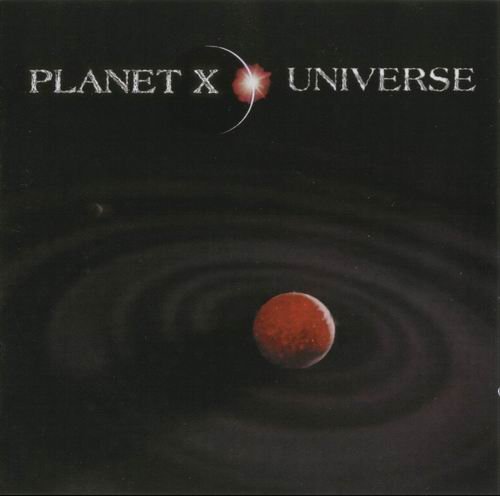
![Thelonious Monk Septet - Monk's Music (Remastered, 2022) [DSD64] Thelonious Monk Septet - Monk's Music (Remastered, 2022) [DSD64]](https://www.dibpic.com/uploads/posts/2025-12/1765434995_front.jpg)
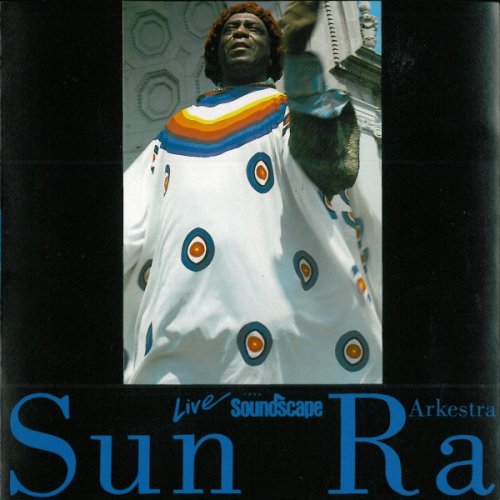
![Julián Mekler, Juan Saidón, Baptiste Stanek, Wes Georgiev, Martin Freiberg - Panorama (2025) [Hi-Res] Julián Mekler, Juan Saidón, Baptiste Stanek, Wes Georgiev, Martin Freiberg - Panorama (2025) [Hi-Res]](https://www.dibpic.com/uploads/posts/2025-12/1765496836_haep8ejv8rx3b_600.jpg)
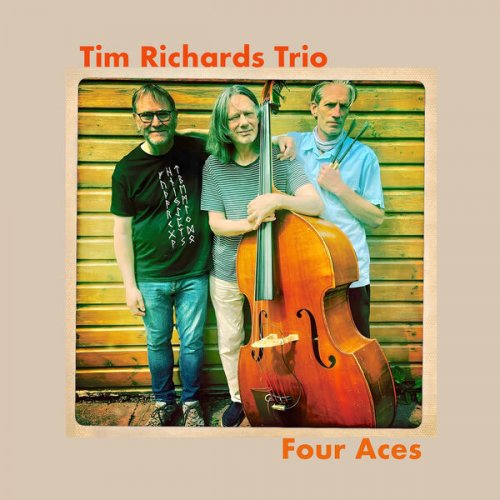
![Frank Sinatra - Christmas (Remastered) (2013) [Hi-Res] Frank Sinatra - Christmas (Remastered) (2013) [Hi-Res]](https://www.dibpic.com/uploads/posts/2025-12/1765618088_fsc500.jpg)
